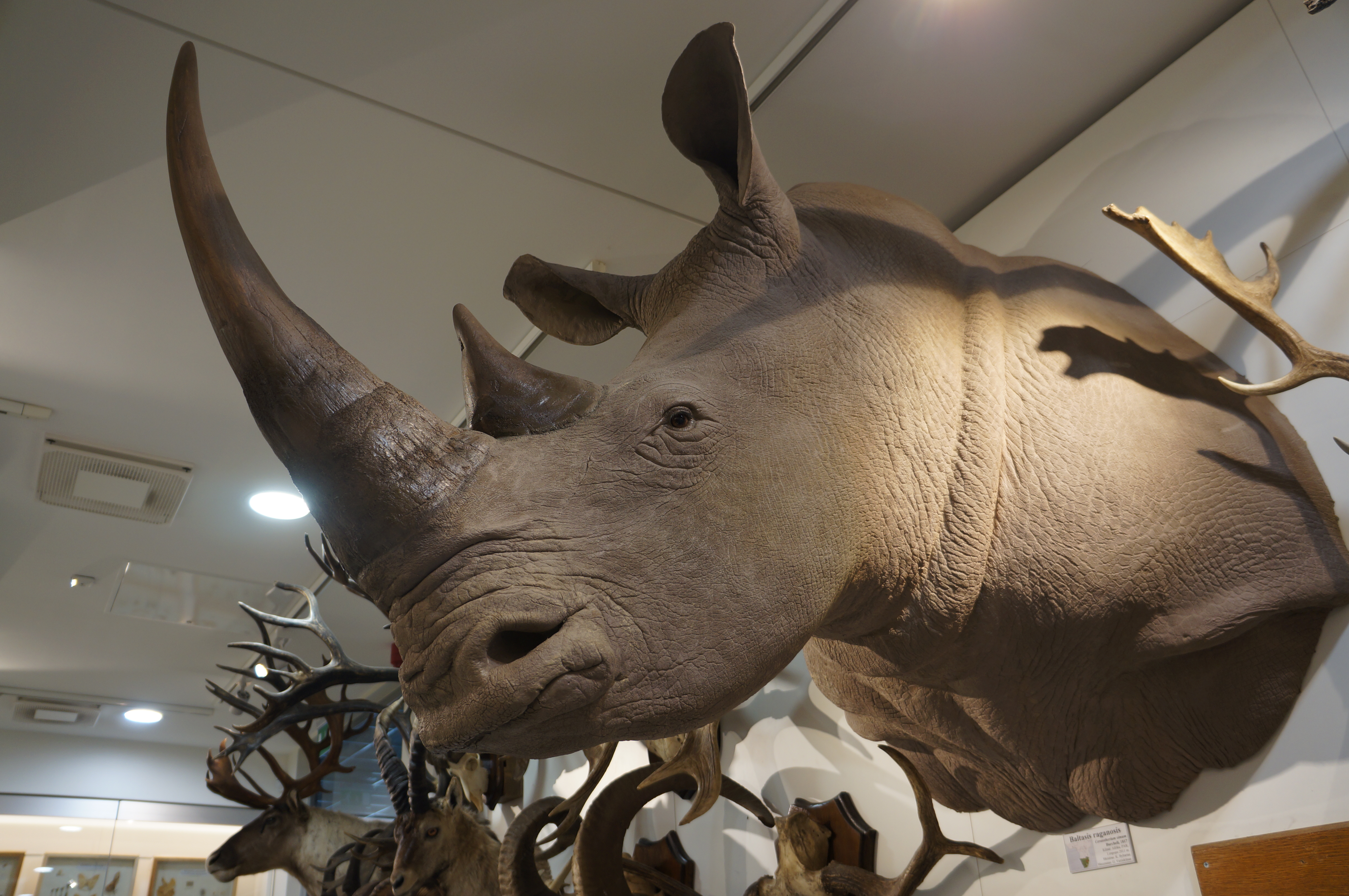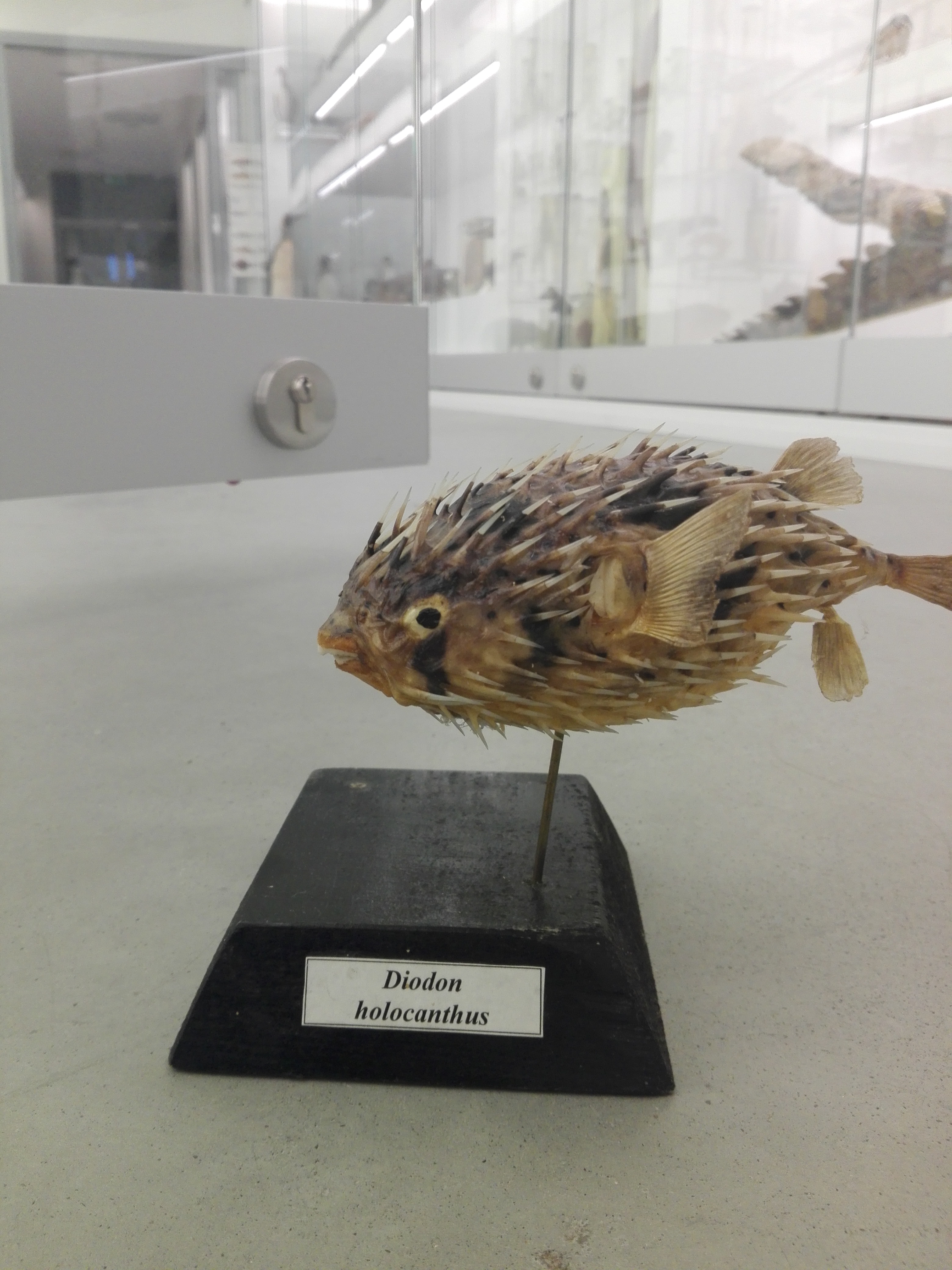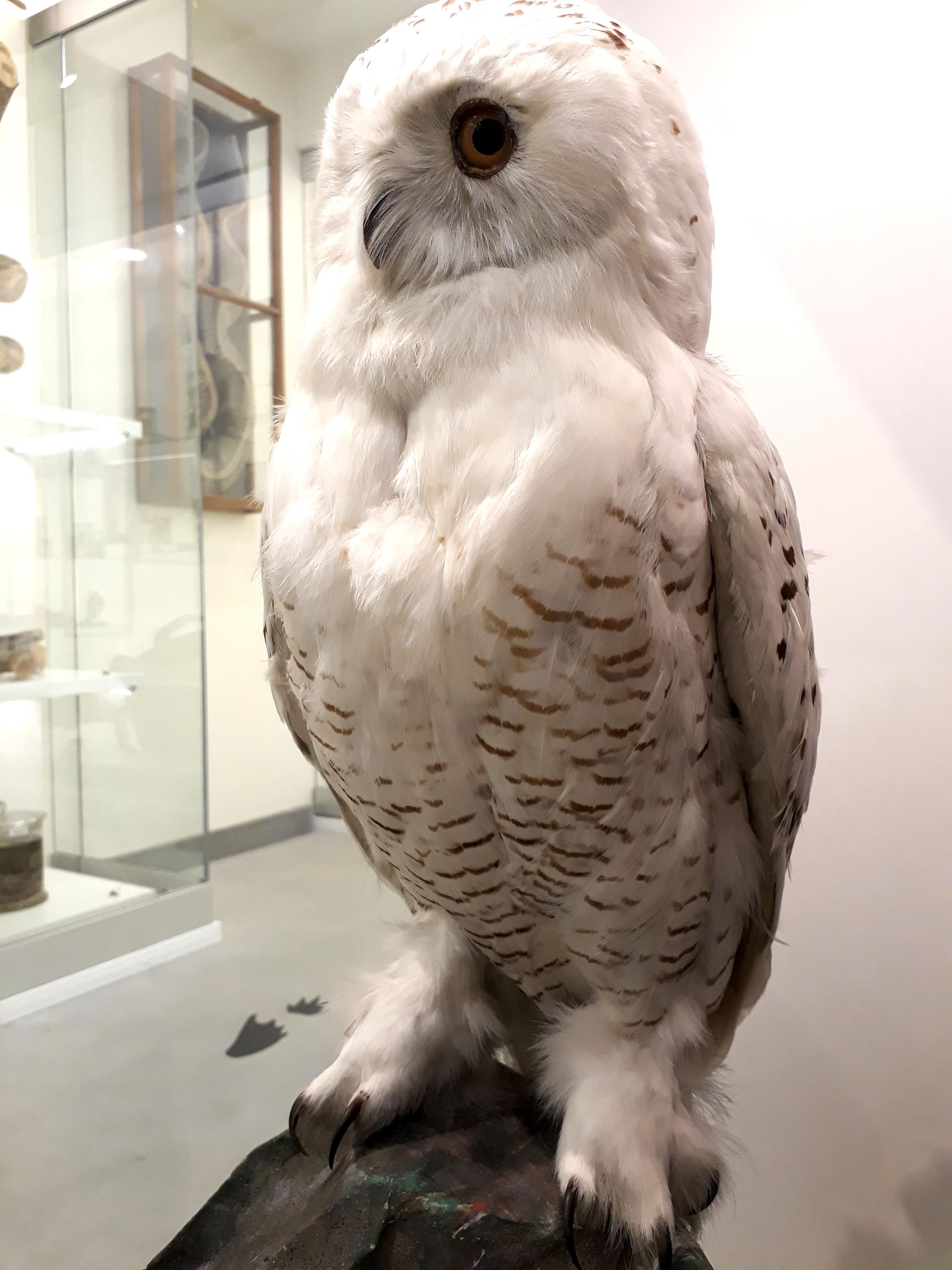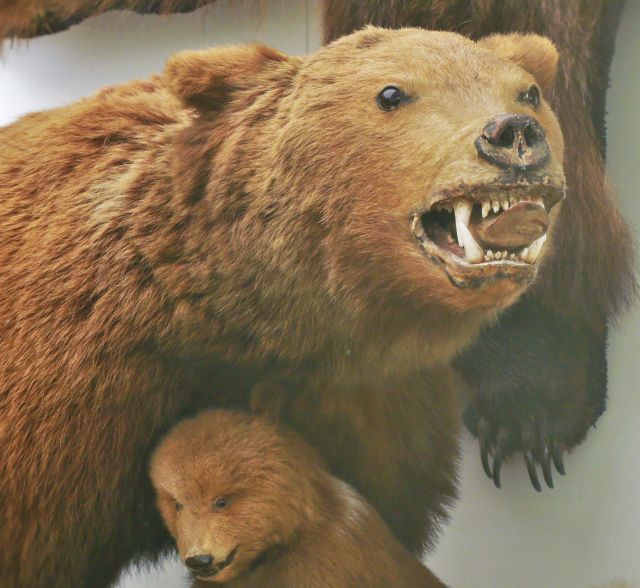Featured specimens
Collections

White rhino at VU museum of Zoology. Picture was taken by Alba Ávila Grimaldos

Pufferfish
Not long ago our fishes from G. Foster's (1754-1794) collection were "swimming" in the exhibition of National art gallery. The exhibition is called "Pilis street" (a link to that exhibition https://www.ldm.lt/pilies-gatve/), and now, on February 14th, our volunteer Alba Àvila Grimaldos presents the LOVE OF FISHES. We not only invite you to read about romance of fishes, but also we invite You to visit a museum, too. We have a lot of exotic fishes to show. Writes us an email to book a tour.

In the series of books about Harry Potter, J.K. Rowling described not only the adventures of the young wizard Harry Potter, but also various magical creatures, including the snow-white owl, named Hedwig. The most interesting thing, that the owl did not carry the mouse during the movie, but the letters... because... it was specially trained by Julie Tottman (watch a Youtube clip). When you arrive at the VU Zoological Museum, you will be able to see the same kind of owl, and for now you can read more about it.

The raising human population and more intensive farming put bears under pressure as predators, doing harm to domestic animals. Intensive deforestation during the XVII-XVIII centuries also put it's toll and at the end of the XIX century bears could only survive in densely forested areas. Best-known naturalist in Lithuania, professor Tadas Ivanauskas indicated, that the last brown bear was hunted in Lithuania in 1883 in Musteika village, Varėna district. VU Zoological Museum has a big male bear from Estonia, donated by G.Vaitiekūnas, several bear cubs from the old Vilnius university collection and one female, that took part in a P.Abukevičius movie "Adventures of the bear Nida", is still unavailable to public, waiting for the restoration... And what do bears do during winter? You are welcome to read here...
These animals have been tamed and used for hunting since the time of ancient Egypt, meanwhile the exhibit of VU Zoology Museum was hunted in Africa by G. Vaitiekūnas. The name "caracal" is composed of two Turkic words: "kara", meaning "black", and "kulak", meaning "ear". Externally this animal is similar to the lynx, so the Greeks and Romans alternatively called it Persian lynx. Results of recent phylogenetic studies indicate that the caracal evolved nearly a million years before the lynx and is more closely related to puma and serval. Read more here...


